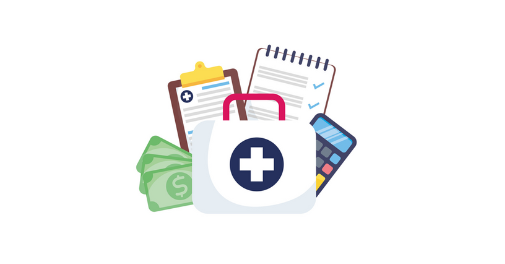
There is a vital role of Medical Billing in Compliance and Risk Management. Medical billing is crucial in healthcare management, extending beyond just processing payments to playing a vital role in compliance and risk management. Here’s a breakdown of how medical billing intersects with these areas:
Ensuring Compliance
Ensuring compliance within the realm of medical billing involves a multifaceted approach that aligns with regulatory requirements, coding accuracy, and ethical standards. Here’s how medical billing professionals ensure compliance, contributing to effective risk management:
1. Adherence to Regulatory Requirements
Understanding Regulations:
Medical billing professionals must stay current with regulations from entities like the Centers for Medicare & Medicaid Services (CMS) and private payers. This includes understanding policies related to billing, coding, and documentation.
Compliance with HIPAA:
The Health Insurance Portability and Accountability Act (HIPAA) sets standards for protecting patient information. Billing departments must ensure that patient data is handled confidentially and securely, and that all electronic health records and communications adhere to HIPAA regulations.
CMS Guidelines:
Medicare and Medicaid have specific billing guidelines that must be followed. This includes adhering to coverage criteria, billing rules, and documentation requirements. Misinterpretation of these guidelines can lead to billing errors and compliance issues.
2. Accurate Coding
Correct Code Selection:
Accurate coding is essential for compliance. Medical billing involves translating healthcare services into codes such as ICD-10 for diagnoses and CPT for procedures. Proper code selection ensures that the services rendered are accurately represented and billed.
Regular Updates:
Coding systems and guidelines are periodically updated. Billing professionals must keep up with these changes to avoid errors and ensure that claims reflect current standards.
Avoiding Upcoding and Unbundling:
Compliance involves preventing practices like upcoding (billing for more expensive services than were provided) and unbundling (billing separately for services that should be bundled). Both practices are considered fraudulent and can result in significant legal and financial consequences.
3. Thorough Documentation
Supporting Documentation:
Accurate and complete documentation supports the services billed. This includes detailed records of patient interactions, treatments provided, and medical necessity for services. Proper documentation ensures that claims are substantiated and can be defended during audits.
Retention Policies:
Organizations must adhere to documentation retention policies as required by law and payer guidelines. This typically includes retaining records for a specified period to support claims and address potential audits or legal issues.
4. Regular Audits and Monitoring
Internal Audits:
Conducting regular internal audits helps identify and rectify potential compliance issues before they escalate. Audits assess coding accuracy, documentation completeness, and adherence to billing policies.
External Audits:
Preparing for and responding to external audits from payers or regulatory bodies is crucial. Effective audit responses include providing requested documentation, correcting any identified issues, and implementing measures to prevent recurrence.
Managing Risk

Managing risk in medical billing involves identifying, assessing, and mitigating various potential issues that could lead to financial loss, compliance breaches, or operational inefficiencies. Here’s a detailed look at how medical billing professionals can manage risk in the context of compliance and overall risk management:
1. Risk Identification and Assessment
Risk Analysis:
Regularly conducting risk assessments helps identify potential vulnerabilities in the billing process. This includes analyzing billing practices, coding accuracy, documentation quality, and compliance with regulations.
Fraud Detection:
Implementing systems to detect unusual billing patterns, such as excessive charges or frequent service alterations, can help identify potential fraud or abuse.
2. Implementing Robust Billing Procedures
Standard Operating Procedures:
Developing and following standardized procedures for billing processes helps ensure consistency and reduces the likelihood of errors. These procedures should cover coding practices, documentation requirements, and claims submission.
Verification Processes:
Implementing verification steps, such as pre-authorization checks and patient eligibility verification, helps reduce the risk of claim denials and ensures that services are covered and necessary.
3. Training and Education
Staff Training:
Regular training sessions for billing staff on the latest coding changes, regulatory updates, and compliance requirements are essential. Well-informed staff are less likely to make errors that could lead to compliance issues or financial losses.
Compliance Awareness:
Promoting awareness of ethical billing practices and compliance guidelines among staff helps prevent risky behaviors and reduces the chance of fraudulent activities.
4. Monitoring and Auditing
Internal Audits:
Conducting routine internal audits helps identify and address issues before they escalate. Internal audits should focus on coding accuracy, documentation completeness, and adherence to billing policies.
External Audits:
Preparing for and responding to external audits from payers or regulatory agencies involves having accurate records and documentation ready. Effective audit management includes addressing findings promptly and implementing corrective actions.
Impact on Financial Performance

Revenue Cycle Management:
Efficient billing processes directly impact a healthcare organization’s revenue cycle. By ensuring that claims are accurately submitted, and payments are promptly collected, billing plays a key role in financial stability and sustainability.
Cost Control:
Proper billing practices help control costs associated with claim denials, rework, and compliance penalties. By minimizing these costs, healthcare organizations can allocate resources more effectively.
Patient Satisfaction:
Transparent and accurate billing contributes to better patient experiences. Clear communication about billing practices and prompt resolution of billing issues can improve patient trust and satisfaction.
Conclusion:
In summary, medical billing is integral to maintaining compliance and managing risk in healthcare settings. It ensures adherence to regulations, prevents fraud, manages financial performance, and contributes to overall operational efficiency. Proper billing practices, continuous training, and regular audits are key to achieving these goals.